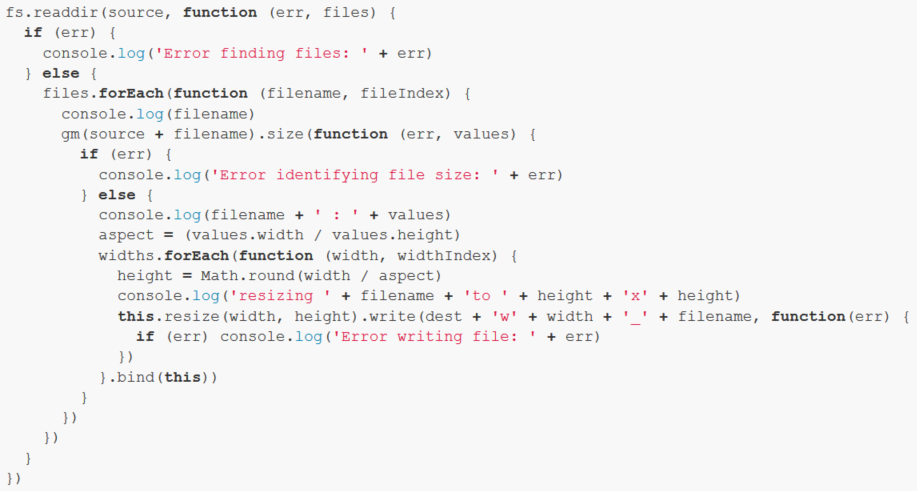Table des matières
MIF38 - CM Promesses
Lionel Médini
MIF38 - Université Claude Bernard Lyon 1

But de ce cours
- Introduire la notion de promesse
- Présenter leur utilité pour :
- gérer du code asynchrone
- lancer des processus en parallèle
- les chaîner
Contenu de ce cours
- Position du problème
- Fonctionnement d'une promesse
- Outils existants
- Utilisation
Problème
Fonctions d'ordre supérieur
+
Programmation asynchrone
=
Callback hell
Source : http://callbackhell.com/
2 types de solutions
- Programmer proprement
- Nommer les fonctions
- Modulariser
- Gérer les erreurs
- Utiliser des “raccourcis syntaxiques”
- Promesses
- Générateurs (ES6)
Promesses : définition
<note>“Promises provide a well-defined interface for interacting with an object that represents the result of an action that is performed asynchronously, and may or may not be finished at any given point in time.”</note>
Source : CommonJS
Outils pré-existants
→ Approches différentes
→ Syntaxes différentes
Unification
La notion (et surtout la syntaxe) unifiées sont les résultats de plusieurs synthèses :
Objectifs
Une promesse permet de :
- Lancer du code asynchrone ou différé (deferred)
- requête AJAX, entrée utilisateur, calcul complexe…
- Réagir spécifiquement
- en cas de succès
- en cas d'erreur
- à la fin de l'exécution
- En conservant des performances acceptables
- multithread
…Tout en vous affranchissant de l'écriture du “boilerplate code”
Statuts
Une promesse est dans l'un des états suivants :
- Pending : état initial
- Fulfilled : l'opération s'est terminée correctement
- Rejected : l'opération s'est terminée avec une erreur
- Settled : l'opération s'est terminée, peu importe comment
Workflow
Syntaxe
Création d'une promesse :
var p1 = new Promise(
// The resolver function is called with the ability to resolve or reject the promise
function(resolve, reject) {
try {
// ...
if(touvabien) {
// Fulfill the promise
resolve(result);
} else {
//Error
reject(error);
} catch(error) {
reject(error);
}
});
Syntaxe
Utilisation d'une promesse :
p1.then(function(result) {
//If fulfilled
}).catch(function(error) {
//If rejected
}).done(funciton() {
//If settled
});
Exemple
Attente de plusieurs promesses
Syntaxe (PromiseJS) :
var promises = [];
promises.push(p1);
promises.push(p2);
...
Promise.all(p).done(function(result) {
//Can use all results
}
Exemple
Compétition entre promesses
Syntaxe (PromiseJS) :
var promises = [];
promises.push(p1);
promises.push(p2);
...
Promise.race(p).then(function(result) {
//Can use all results
}
Exemple
Références
- Le problème du callback hell
- Les promesses en ES6 sur HTML5Rocks
- Des docs sur MDN et ECMAScript via MDN
- Le Wiki CommonJS
- La bibliothèque PromiseJS
- Les antipatterns liés aux promesses sur Tao of code

